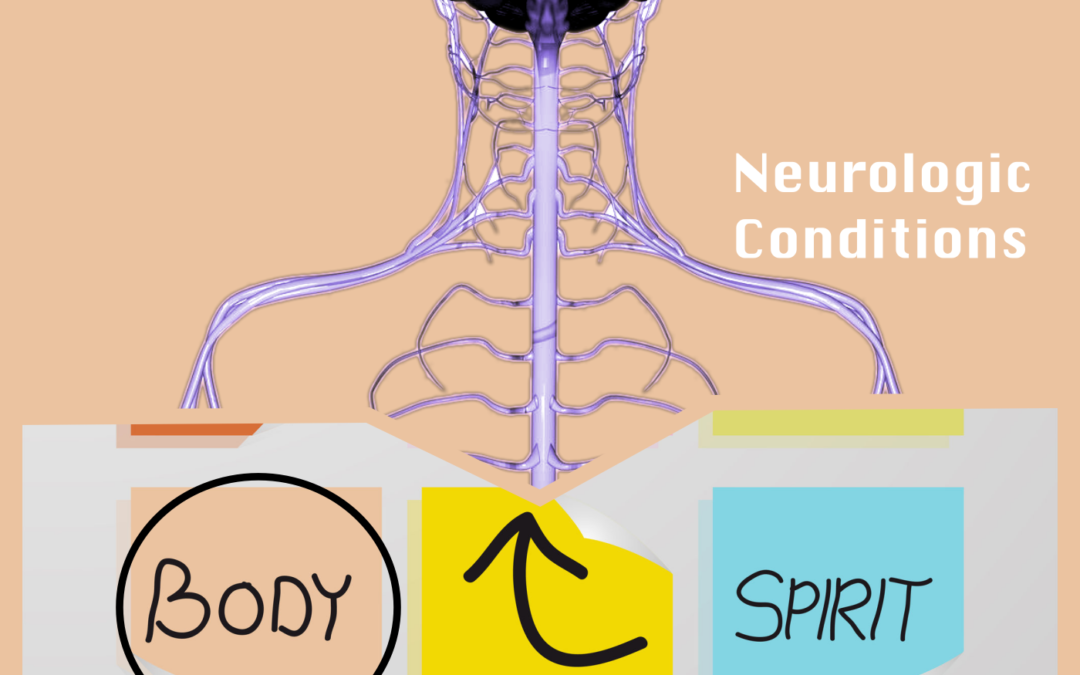Drop foot is a condition where the foot does not lift up during walking due to a problem with the muscles that lift the foot. It is not a disease in itself but typically a symptom of a condition.
What are the signs someone may have Drop Foot?
Toe Catch
An early symptom of foot drop is occasional foot catching when waking on uneven or unfamiliar terrain.
Fear of leaning backward
When the foot is on the ground, the muscle that lift the foot now act to hold the body over the base of support or bring the body forward when the body is positioned behind the feet. Therefore, another sign may be fear of leaning backward ![]() where your body (the center of mass) moves behind your feet (your base of support).
where your body (the center of mass) moves behind your feet (your base of support).
Unable to stand up from a chair
Sit to stand is difficult because the ankle muscles help to bring your body (center of mass) forward over your feet (base of support). 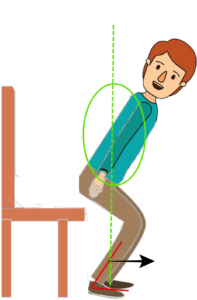
When these muscles are not working properly, your center of mass stays behind your base. 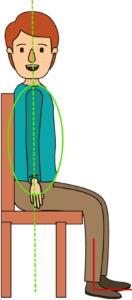 In this case, it may take several attempts to stand from a chair. On the second or third attempt, someone will may compensate by generating momentum
In this case, it may take several attempts to stand from a chair. On the second or third attempt, someone will may compensate by generating momentum 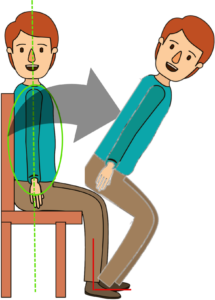 with their trunk to achieve this position and successfully stand up without requiring the use of the ankle muscles.
with their trunk to achieve this position and successfully stand up without requiring the use of the ankle muscles.
Stand with knees bent
Sometimes it may feel more natural to stand with slightly bent knees.![]() This ensures that your body stays over your feet without the use of the ankle muscles. This may also be a sign that the ankle muscles of not working properly.
This ensures that your body stays over your feet without the use of the ankle muscles. This may also be a sign that the ankle muscles of not working properly.
What Causes Foot Drop?
Lower Nerve Injury
Peripheral nerve damage can occur when pressure is applied to the nerves that communicate with the muscles in the lower leg. This can occur following a back injury where a disc may be herniated a placing pressure on the nerve that controls the ankle. This can also occur if the lower part of the nerve is damaged. The lower part of the nerve near the lower leg is the most common place where it may become damaged. This nerve is very close to the surface on the outside of the leg just below the knee. Sometimes trauma to this area can cause damage at this location. For people who are bed bound or wheelchair bound, the nerve can become damaged with something is pressing up against the leg (ie: the bar that supports the leg rests on a wheelchair, 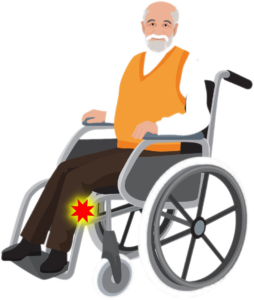 or laying on your side on a firm surface where there is not adequate padding).
or laying on your side on a firm surface where there is not adequate padding). 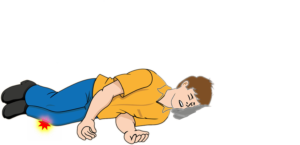
Muscle Injury
Swelling after muscle injury can result in compartment syndrome, where nerve and blood to the muscle is disrupted. This can also cause the muscles in the lower leg to become weak and may be a cause of drop foot.
Brain and spinal cord injury
This can occur following stroke, and spinal cord injury. It can also occur in several other conditions effecting the brain and spinal cord, including multiple sclerosis, and amyolotrophic lateral sclerosis (ALS)
What are the Best Exercises for Foot Drop?
Passive Range of Motion 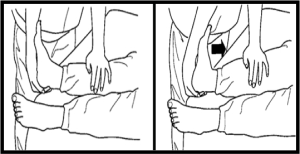
Caregiver Instructions: Cup the heel in your hand. Use your forearm to press the foot toward the leg until you feel some resistance. Use your free hand to stabilize the leg as shown in the picture
Gastrocnemius Stretch 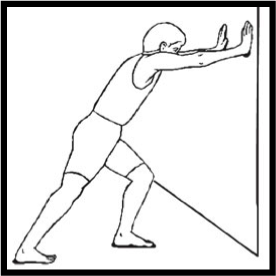
Once you are able to stand safety, add these ankle stretches
Instructions: Place the foot you want to stretch in the back and your other foot forward. Press your hips toward the wall. Make sure your heel stays on the ground and your back knee stays straight
Soleus Stretch 
Instructions: Place the ankle you want to stretch in the back and your other foot forward. Press your hips forward. Keep your heel on the ground and maintain a slight bend your knee that is in the back
Ankle Strengthening 
Instructions: Start seated with your knee bent. Try to lift the foot. Think about leading the lifting motion with our pinky toe. Try to avoid leading with the arch of the foot or the big toe.
Once this becomes easy, try this exercise with the knee straight

